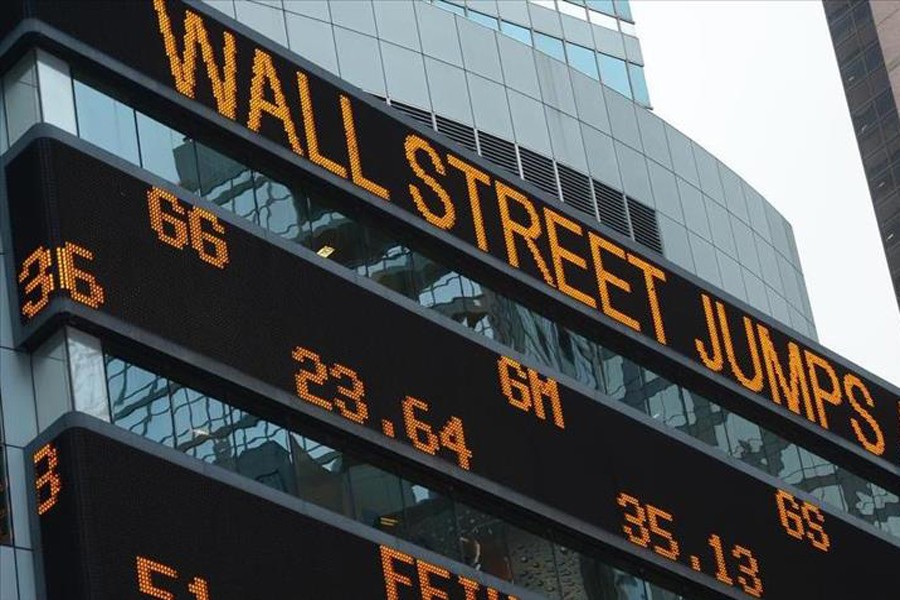Wall Street’s main indexes tumbled about 2.0 per cent on Friday after a raft of weak manufacturing data from the US and Europe led to an inverted yield curve, stoking fears of an economic slowdown.
Manufacturers in Europe, Japan and the US suffered in March as surveys showed trade tensions had impacted factory output, a setback for hopes the global economy might be turning the corner on its slowdown.
This led to the spread between three-month Treasury bills and 10-year note yields inverting for the first time since 2007. An inverted yield curve is widely understood to be a leading indicator of recession.
Financial stocks took the biggest hit, tumbling 2.94 per cent, the most among the 11 main S&P sectors. The banking sector plunged 4.0 per cent.
Chipmakers, which get a huge chunk of their revenue from China, fell. The Philadelphia chip index was down 2.29 per cent, while the broader technology sector declined 1.64 per cent.
At 12:44 pm ET the Dow Jones Industrial Average was down 449.97 points, or 1.73 per cent, at 25,512.54.
The S&P 500 was down 52.68 points, or 1.85 per cent, at 2,802.20 and the Nasdaq Composite was down 175.96 points, or 2.24 per cent, at 7,663.00.
The three main indexes were on track to wipe out gains for the week. This follows a strong run in the prior week, with the S&P 500 and the Nasdaq recording their biggest weekly rise of the year.
Only the defensive utilities, real estate and consumer staples sectors were trading higher.
Nike Inc dropped 5.5 per cent after the sportswear maker’s quarterly revenue failed to beat Wall Street estimates. Its partner Foot Locker Inc fell 4.4 per cent
Declining issues outnumbered advancers for a 3.71-to-1 ratio on the NYSE and for a 5.47-to-1 ratio on the Nasdaq.
The S&P index recorded 54 new 52-week highs and five new lows, while the Nasdaq recorded 21 new highs and 63 new lows.


